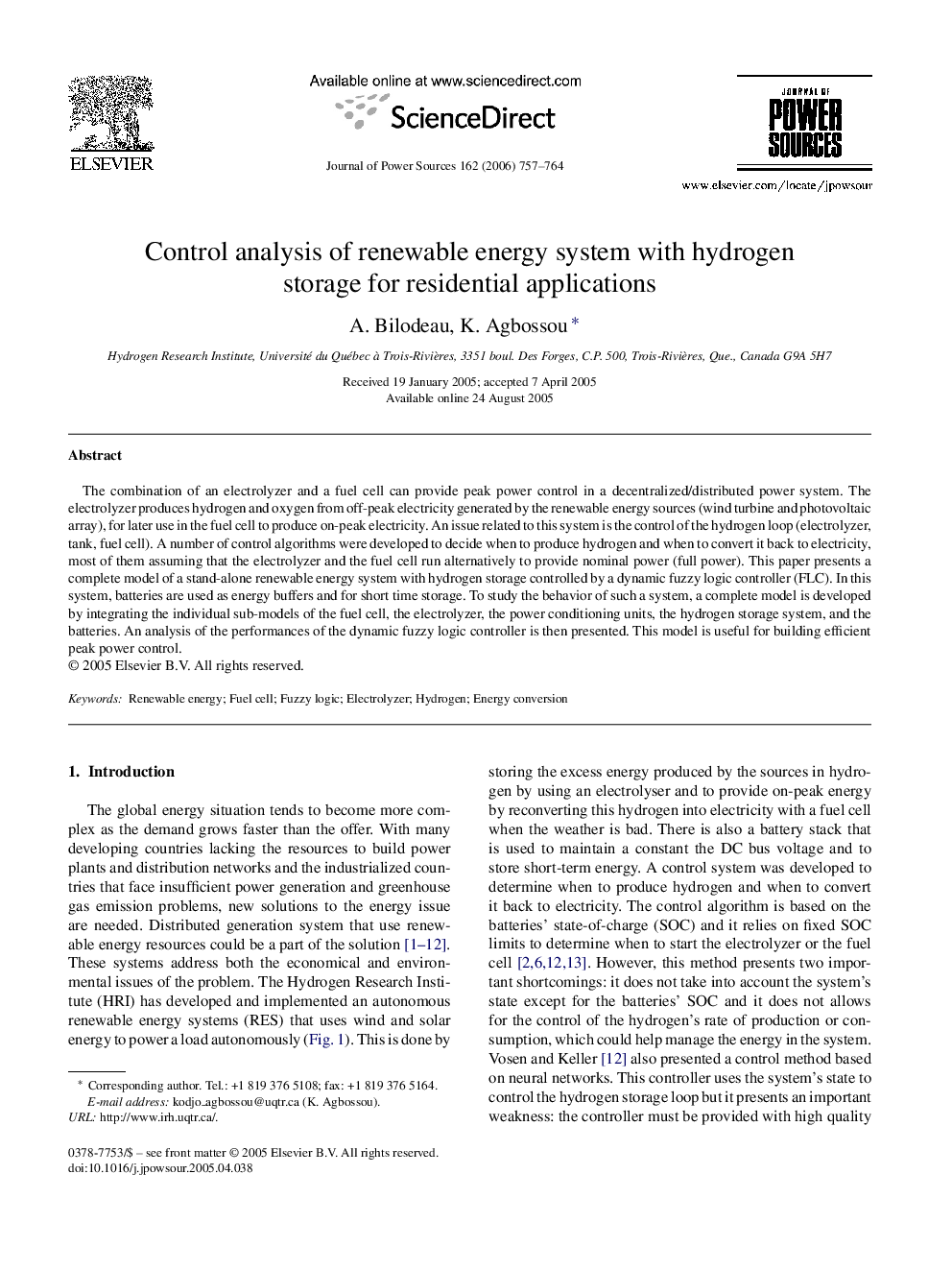| Article ID | Journal | Published Year | Pages | File Type |
|---|---|---|---|---|
| 1292431 | Journal of Power Sources | 2006 | 8 Pages |
The combination of an electrolyzer and a fuel cell can provide peak power control in a decentralized/distributed power system. The electrolyzer produces hydrogen and oxygen from off-peak electricity generated by the renewable energy sources (wind turbine and photovoltaic array), for later use in the fuel cell to produce on-peak electricity. An issue related to this system is the control of the hydrogen loop (electrolyzer, tank, fuel cell). A number of control algorithms were developed to decide when to produce hydrogen and when to convert it back to electricity, most of them assuming that the electrolyzer and the fuel cell run alternatively to provide nominal power (full power). This paper presents a complete model of a stand-alone renewable energy system with hydrogen storage controlled by a dynamic fuzzy logic controller (FLC). In this system, batteries are used as energy buffers and for short time storage. To study the behavior of such a system, a complete model is developed by integrating the individual sub-models of the fuel cell, the electrolyzer, the power conditioning units, the hydrogen storage system, and the batteries. An analysis of the performances of the dynamic fuzzy logic controller is then presented. This model is useful for building efficient peak power control.
